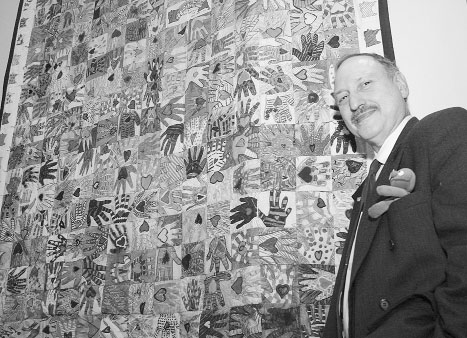By Albert Amateau
A Lower East Side school whose student population reflects the astonishing diversity of the neighborhood, P.S. 20 is one of the great success stories of the city’s public school system.
About 900 boys and girls will be entering the pre-K to sixth grades in the school at 166 Essex St. next week to be greeted by a staff of 80 and Leonard Golubchick, the P.S.20 principal for the past 26 years.
Known familiarly to students and teachers as Dr. G., Golubchick is justly proud of the school’s achievement.
“We’re the only school in the old District 1 that is exempt from the new mandated literacy and math curriculum. One or two may be exempt from one or the other, but no other school is exempt from both,” he said in an interview last week. Under the new Department of Education rules, schools whose students show high achievement or significant improvement may continue as they have instead of adopting the new system-wide curriculum.
“The New York Times called us the ‘Jewel of the Lower East Side’ in an article in May,” he said.
The achievement is especially notable in a school where 52 percent of the students’ first language in not English. “We have children whose first language is Chinese, Spanish, Serbo-Croatian, Turkish, Rumanian, Russian and Arabic,” Golubchick said. “We have students from French-speaking Africa and about 100 children speak Bengali as a first language,” he added.
Golubchick noted that the school population is far from affluent — more than 99 percent of the students qualify for the federal/state free breakfast program.
Nevertheless, the school is committed to programs that help children become critical thinkers. “That’s crucial,” Golubchick said. “When they become critical thinkers, doers and risk-takers, they become learners,” he said.
“We do a lot of professional staff development concentrated in the Orton-Gillingham reading system, a phonetic system that turns children into readers,” he said. “Our librarian is a full-time librarian; we have workshops with Apple and Dell computers and we integrate the arts, with our partner, Henry St. Settlement, into the curriculum. The arts are part of what we do every day,” Golubchick said. The school is also committed to a program called “A Different Way of Knowing,” which has proved successful in neighboring schools.
Teachers meet periodically to assess each program’s effect on learning. As part of the process, each child keeps a portfolio of his or her work The school’s education philosophy is based on a compilation of the latest cognitive research and how it relates to learning, said Golubchick.
A highlight of the school year is the P.S. 20 Learning Fair in March when the community at large is invited to see the products of the students’ work.
Programs for parents are an important part of the P.S. 20 programs. The school has workshops where parents learn to use computers. An English as a Second Language program helps parents who are not native speakers of English. A story-telling workshop helps parents create storybooks with folk tales from their native countries. “Our parent-teacher association meetings get over 100 parents attending,” Golubchick said.
On Sept. 24, P.S. 20 will open its doors to parents for its annual back-to-school night.
Golubchick’s connection to the neighborhood has deep roots. He was born and raised on the Lower East Side and so was his wife, now a teacher, who went to Seward Park High School. He went to elementary schools in the East Village and to New Utrecht High School in Brooklyn, where he played on championship baseball and basketball teams.
“I played some professional ball in the Philly farm system in 1963 and ’64 [right field and first base] in the Carolina League,” he said. He spent two years in the Navy, earned a bachelor’s degree from Long Island University and a doctorate from New York University and became a teacher in the city school system in 1966.
Golubchick was named Educator of the Year last June by DARE, a drug prevention program.
He is optimistic about the new structure of the city school system, but acknowledged that the new Region 9, which covers Manhattan and part of the Bronx, is a formidable challenge, comprising 170 schools, of which 70 are high schools. “It has more high schools than any other region — some cities don’t have as many schools,” he observed. Nevertheless, he said he had confidence in Peter Heany, the region superintendent. “A lot of kinks will have to be worked out and they are trying to do that,” Golubchick said.





































